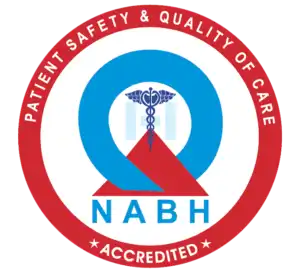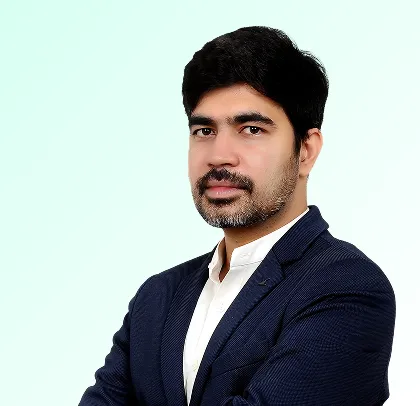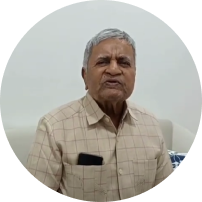Best Shoulder Pain Treatment and Doctors in Bangalore
At Epione Pain Management Center, we specialize in exceptional shoulder pain treatment in Bangalore, offering tailored solutions for lasting relief. From PRP therapy to Hydro dissection, our expert shoulder pain doctors in Bangalore ensure effective care to alleviate pain and restore your shoulder’s full range of motion.

Best Hospital in Bangalore for all Shoulder Pain Conditions
Shoulder pain can disrupt your daily routine. At Epione Pain Management Center, we specialize in advanced, non-surgical treatments to address common shoulder conditions. Here’s a closer look at these conditions:

Rotator Cuff Tendinitis
Inflammation of the rotator cuff tendons leads to pain and limited movement. Repetitive motions often cause this condition. Our treatments, including Stem Cell Therapy and PRP, help reduce inflammation and restore shoulder function.

Frozen Shoulder (Adhesive Capsulitis)
A frozen shoulder causes stiffness and significant pain in the shoulder joint. It progresses in stages, restricting mobility. At Epione, we use non-invasive methods like Hydro dissection and physical therapy to alleviate discomfort and improve flexibility.

Shoulder Impingement Syndrome
Shoulder impingement occurs when tendons are pinched between the bones of the shoulder, causing irritation and pain. Our experts offer non-surgical treatments such as PRP and Stem Cell Therapy to target the root cause and restore normal movement.

Arthritis
Arthritis in the shoulder involves inflammation of the joint, leading to pain, stiffness, and reduced mobility. Osteoarthritis and rheumatoid arthritis are common types. At Epione, we provide advanced treatments like PRP and Stem Cell Therapy to reduce inflammation, repair damaged tissues, and improve joint function without surgery.
When to See a Doctor for Shoulder Pain
You should consult a doctor if you experience any of the following:

persistent pain lasting more than a few days despite rest or over-the-counter medications

difficulty moving your shoulder or lifting your arm

sharp or intense pain after an injury or fall

nighttime discomfort that disrupts sleep

weakness or numbness in the arm or hand

swelling or bruising around the shoulder

pain that radiates down the arm

or no improvement with home care after a week. Additionally, visit a doctor if the pain worsens over time.
Diagnosis
Our Shoulder pain hospital in Bangalore offers a comprehensive diagnosis process designed to provide a personalized and clear understanding of your Shoulder pain:

Physical Examination
Our doctors at Epione assess your symptoms through physical tests, evaluating a range of motion, strength, and tenderness to identify the specific cause of shoulder pain.

X-Rays
X-rays help detect fractures, joint misalignments, impingement, and bony abnormalities. They provide clear images of bone structures and assess any structural damage in the shoulder.

Dynamic Ultrasound Imaging
Dynamic ultrasound imaging is ideal for evaluating soft tissue damage, particularly rotator cuff injuries, by capturing real-time images of the shoulder during movement.

CT Scans and MRIs
CT scans and MRIs offer detailed images of soft tissue injuries like tendon tears, ligament damage, or cartilage issues, helping to diagnose complex shoulder conditions.
Our approach to Shoulder pain treatment
At Epione, we provide advanced shoulder pain treatments designed for effective, non-surgical recovery.
Physiotherapy
Physiotherapy at Epione is designed to strengthen shoulder muscles, improve joint flexibility, and reduce pain. Tailored exercises help restore mobility and prevent future injuries.

Medications
We recommend medications like NSAIDs and corticosteroid injections to reduce inflammation and alleviate pain. These treatments are commonly used to manage shoulder pain and improve recovery.

Stem Cell Therapy
Stem cell therapy utilizes your body’s own regenerative cells to promote healing in damaged tissues. This non-invasive treatment accelerates recovery and reduces inflammation in the shoulder.

Platelet-rich Plasma (PRP)
PRP therapy is a cutting-edge, non-surgical treatment that uses concentrated platelets from your own blood to promote healing. Platelets contain growth factors that stimulate tissue repair, reduce inflammation, and accelerate recovery. It is particularly effective for tendon injuries, rotator cuff tears, and arthritis. The procedure is minimally invasive, with no risk of rejection, making it a safe and natural option for shoulder pain relief and long-term recovery.

Hydro dilatation of the Joint
Hydro dilatation is a non-surgical procedure where a sterile saline solution is injected into the shoulder joint to expand the capsule and separate adhesions. This technique is highly effective for conditions like frozen shoulder (adhesive capsulitis) and impingement syndrome, as it reduces stiffness, improves range of motion, and alleviates pain. The procedure is quick, minimally invasive, and often provides significant relief with minimal downtime.

Why Choose Epione Pain Management for Shoulder Pain Treatment?
At Epione, we are committed to providing a comprehensive, systematic, and personalized approach to Shoulder Pain treatment.

Non-surgical Treatments:
At Epione, we specialize in advanced non-surgical treatments for shoulder pain, offering effective alternatives to invasive procedures. Our therapies, such as Stem Cell Therapy and Platelet-Rich Plasma (PRP), harness the body’s natural healing mechanisms to repair damaged tissues, reduce inflammation, and restore function. These treatments are ideal for conditions like rotator cuff injuries, arthritis, and frozen shoulders. Minimally invasive and tailored to each patient, they ensure quicker recovery, reduced pain, and no surgical risks.

Quick Procedure:
Most treatments at Epione are quick, with minimal downtime, ensuring faster recovery for those seeking shoulder pain treatment in Bangalore.

Painless Experience:
Our procedures are designed to be minimally invasive, providing a painless experience for patients under the care of expert shoulder pain doctors in Bangalore.

Our Doctors
Reviews
Very good doctor. Suffering from knee pain from last 4 years and didn’t want to get a surgery. They treated my knee pain without surgery with stem cell therapy. I am very happy with the results.
Meghana Reddy

By far the best pain management specialists in town. After consulting several places with no effect, Epione made sure that they treated my mother’s delicate pain condition with patience.
Deepthi K

Frequently Asked Questions
What lifestyle factors contribute to shoulder pain?
Poor posture, repetitive overhead movements, a sedentary lifestyle, and muscle imbalances can strain the shoulder, leading to chronic pain and discomfort.
How do I know if my shoulder pain is serious?
Persistent, sharp pain, weakness, or radiating pain down the arm may indicate a serious injury needing medical attention and shoulder pain treatment in Bangalore.
What happens if shoulder pain is left untreated?
Untreated shoulder pain can result in chronic conditions, reduced mobility, and permanent damage. Early shoulder pain treatment can help prevent these complications.
What should I expect during my first consultation for shoulder pain?
Your consultation will include a detailed medical history, physical examination, and possibly diagnostic tests like X-rays to assess the cause of your shoulder pain.
Does Epione offer non-surgical treatment for shoulder pain?
Yes, Epione provides non-surgical shoulder pain treatment like PRP therapy, stem cell therapy, and hydro dissection to treat various shoulder conditions effectively.
How does PRP Therapy help with shoulder pain?
PRP therapy uses concentrated platelets from your blood to promote healing in damaged tissues, reducing inflammation and accelerating recovery from shoulder injuries.












